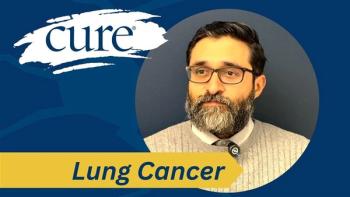
Comparing Melanoma Rates Across the US
Overall, melanoma incidences increased over the past year in the United States, but deaths did not, according to a recent study which stratified the data by state.
Melanoma, despite being preventable in many cases, remains one of the deadliest and most common types of cancer in the United States. A recent study created graphics of nearly every state in the United States containing the rates of incidence and death in 2003 and 2013, allowing people to compare the increase or decrease in cases of melanoma over the decade, as well as see where states rank with one another.
“We thought it would be interesting to compare the different states and different regions of the nation in terms of melanoma death rates and melanoma incidents over the past decade,” said Robert Dellavalle, M.D., Ph.D., M.S.P.H. “Melanoma is the deadliest skin cancer, but it’s not the most common. Looking at all the states next to each other, we might be able to see areas of the country that are doing better than others in terms of death rate and incidents.”
A majority of the US experienced elevated amounts of melanoma incidents, with 38 out of the 49 states reporting increased cases of melanoma. Increases were most prominent in midwestern states (10 out of 12, 83 percent), southern states (15 out of 16, 94 percent) and western states (nine out of 12, 75 percent).
Death rates did not occur in the same capacity as incident increases did. According to the census, 23 states (48 percent) experienced a decrease in death rates, four states (8 percent) experienced no change and 21 states (44 percent) experienced an increase. This decline in death rates were mostly found in northeastern states (six out of nine, 67 percent) and western states (nine out of 12, 75 percent).
Several states experienced an increase in both death and incidence rates over the decade. The midwestern region had the most with eight of their 11 states experiencing an increase in both death and incidence rates. This may indicate that a greater amount of incidences of melanoma result in more deaths due to melanoma, but not all regions displayed the same pattern. While there was a rise in incidents in 15 of the 16 states, seven (44 percent) states saw an increase in deaths while seven (44 percent) states saw a decrease. This decrease in death rate might indicate there is better treatment for patients with melanoma and their life is being prolonged, according to the study.
Though speculations can be made based on the results of the study, none of the hypotheses are proven. Further research must be conducted to learn the reasons behind the results, including why incidences increased while death rates decreased as well as why some regions show improvements and others decline.
“This is more of a descriptive study that generates a lot of further questions to look into,” Dellavalle explained.
One important purpose of this study was to evaluate states that had positive results in the past decade and what they did differently than other regions, whether that be in legislation or informative programs.
In the Northeast, there was a decrease in death and incidence rates from melanoma, possibly due to intervention programs and improved distribution of information. The Melanoma Foundation of New England, created in 1999, is dedicated to providing resources to the public. They recently gained media attention for providing free sunscreen in public locations.
Several other organizations are working to decrease the amount of melanoma incidences. The National Council on Skin Care Prevention sponsors Skin Smart Campus, an initiative to eliminate college students’ easy-access to tanning beds, as well as promote healthy skincare. In another program, a team from the University of Colorado Anschutz Medical Campus received a grant to buy ultraviolet (UV) cameras and distribute them to 10 college campuses across the state. The UV cameras show the sun damage on people’s skin that will be visible as they age.
It is important that researchers continue to conduct studies and create informative graphics such as this one and compare states over the years. It illustrates the effect prevention programs have and what areas in the United States need improvement.
“This kind of data graphic makes it very easy to compare states and regions and that's the kind of thing we don't really do a lot in public health,” Dellavalle said. “That can be very helpful in motivating areas that aren't doing so well to look to others that are doing better and seeing what they're doing in terms of public health when you have a preventable cancer like skin cancer that caused predominantly by UV radiation. It can motivate people to do better, to do the programs and things that are having decreases in incidences and death rate.”





